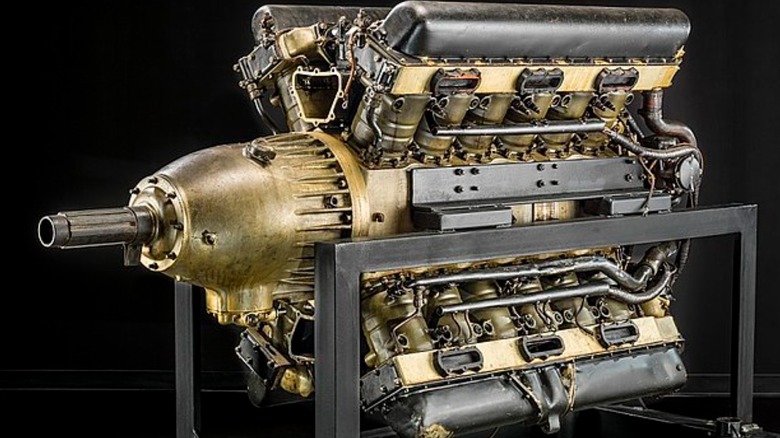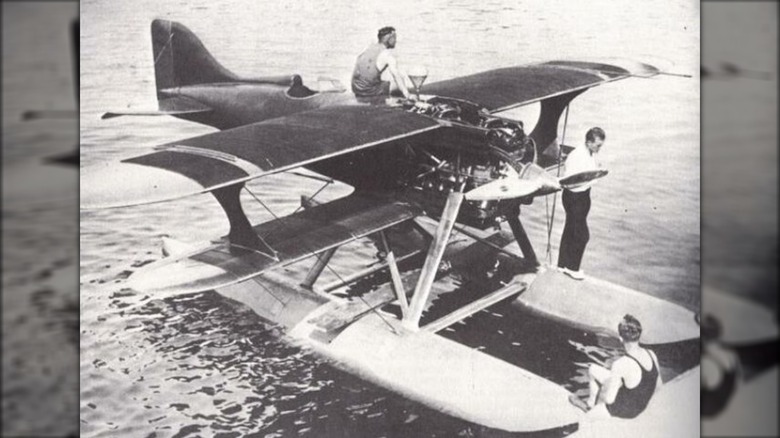Everything To Know About Packard's 24-Cylinder Engine
At the start of the 20th century, big things were happening in the world of transportation. Inventions such as the Ford Model-T, with its remarkably special engine, were revolutionizing the ways in which people traveled from one location to another. Of course, these breakthroughs weren't limited strictly to ground-level travel. The field of aeronautics also saw great strides made during this period, with one of the most intriguing developments coming from the now-defunct Packard Motor Car Company. With car engines under its belt, it turned its attention to aviation in the 1920s.
To kick off the decade, Packard began development on what became known as the Packard 1A-2775 X-24 aircraft engine, which came to fruition and took to the skies for the first time at the 1927 Schneider Trophy race. The engine consists of two 60 degree V12 engines, with one standing upright while the other is turned upside down. The single crankcase also features 24 cylinders spread across four banks that are configured in an "X" formation. The engine gets 969 kW (1,300 hp) at 2,700 rpm, making it quite the aerial powerhouse in its time. In fact, pilot Al Williams managed to set an unofficial speed record with it at 322 mph.
Despite its impressive speed capabilities and interesting design, the experimental Packard 1A-2775 didn't get an opportunity to shine on a grand scale.
The Packard 1A-2775 quickly came and went
All in all, the story of the Packard 1A-2775 engine isn't a very long or eventful one. Following the creation of the first one and its Kirkham-Williams racer testing in 1927, the United States Navy's Bureau of Aeronautics ordered a second. The engine was advertised as being "built-to-order," but unfortunately for Packard, selling experimental airplane engines at roughly $35,000 a piece didn't turn out to be a very profitable business venture. None were ordered by the time the 1930s rolled around, with the Navy acquiring the only two existing 1A-2775s.
It has been almost a century since the creation and testing of the 1A-2775, and the engine has largely fallen into the realm of historical obscurity. The Navy held on to both of its 1A-2775s, tinkering with the second one a bit in hopes of making it more efficient. Sadly, it's unknown what has become of the second 1A-2775, but at least the very first hasn't been lost to time. In 1971, the Navy gifted it to the Smithsonian Institution, where it has remained ever since. Rumors have swirled that a third engine, referred to as the 2A-2775, was planned and potentially created, but no photos or testing data have surfaced.
Though it showed great promise, the Packard 1A-2775 was clearly not destined to become one of history's many revolutionary, aviation-changing engines.

